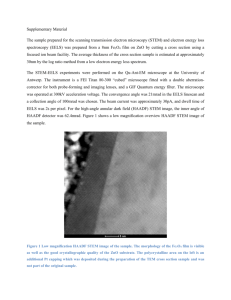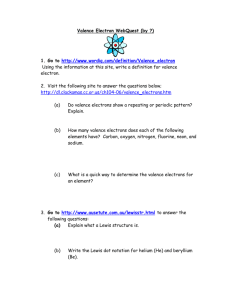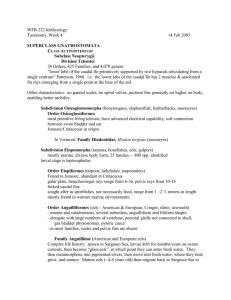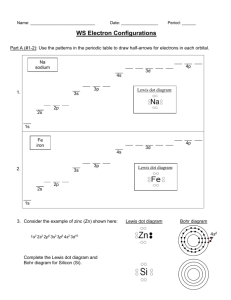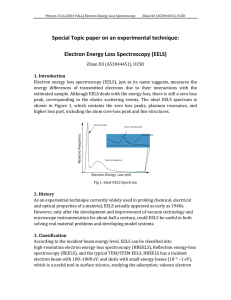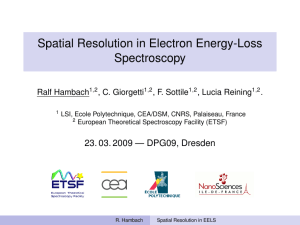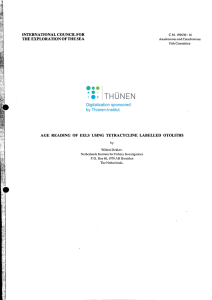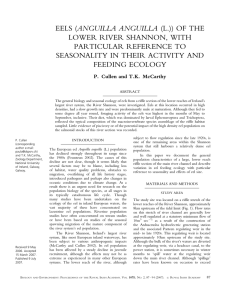Nanoscale Measurement of Manganese Valence in Mn-oxides K
advertisement
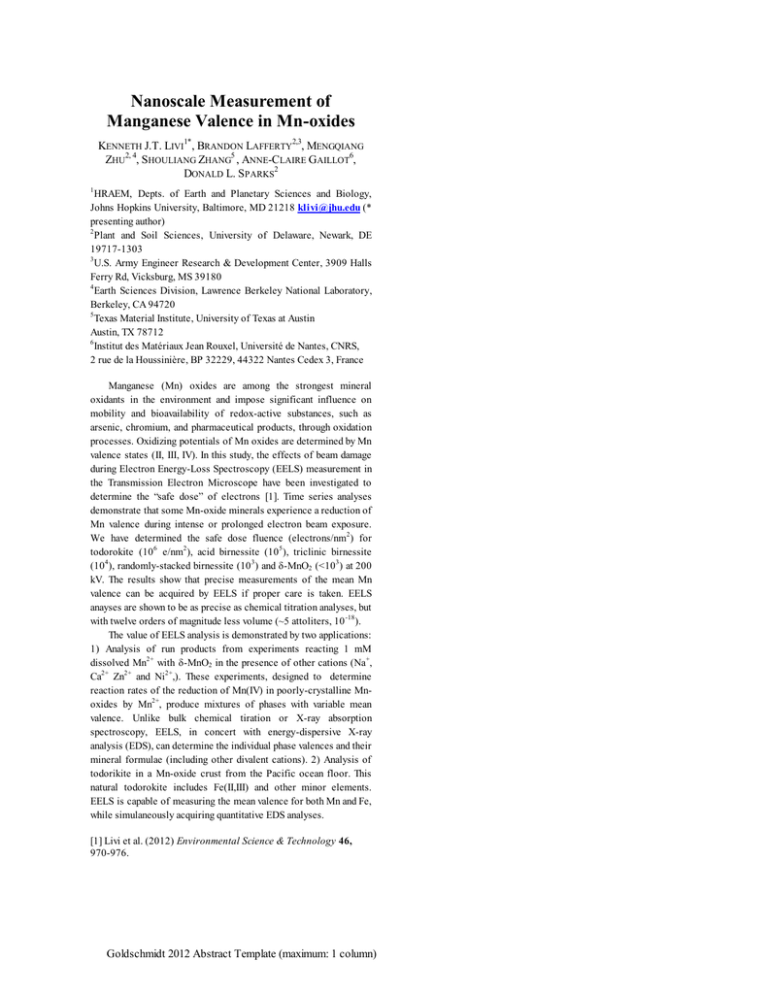
Nanoscale Measurement of Manganese Valence in Mn-oxides KENNETH J.T. LIVI1*, BRANDON LAFFERTY2,3, MENGQIANG ZHU2, 4, SHOULIANG ZHANG5 , ANNE-CLAIRE GAILLOT6, DONALD L. SPARKS2 1 HRAEM, Depts. of Earth and Planetary Sciences and Biology, Johns Hopkins University, Baltimore, MD 21218 klivi@jhu.edu (* presenting author) 2 Plant and Soil Sciences, University of Delaware, Newark, DE 19717-1303 3 U.S. Army Engineer Research & Development Center, 3909 Halls Ferry Rd, Vicksburg, MS 39180 4 Earth Sciences Division, Lawrence Berkeley National Laboratory, Berkeley, CA 94720 5 Texas Material Institute, University of Texas at Austin Austin, TX 78712 6 Institut des Matériaux Jean Rouxel, Université de Nantes, CNRS, 2 rue de la Houssinière, BP 32229, 44322 Nantes Cedex 3, France Manganese (Mn) oxides are among the strongest mineral oxidants in the environment and impose significant influence on mobility and bioavailability of redox-active substances, such as arsenic, chromium, and pharmaceutical products, through oxidation processes. Oxidizing potentials of Mn oxides are determined by Mn valence states (II, III, IV). In this study, the effects of beam damage during Electron Energy-Loss Spectroscopy (EELS) measurement in the Transmission Electron Microscope have been investigated to determine the “safe dose” of electrons [1]. Time series analyses demonstrate that some Mn-oxide minerals experience a reduction of Mn valence during intense or prolonged electron beam exposure. We have determined the safe dose fluence (electrons/nm2) for todorokite (10 6 e/nm2), acid birnessite (10 5), triclinic birnessite (10 4), randomly-stacked birnessite (10 3) and -MnO2 (<10 3) at 200 kV. The results show that precise measurements of the mean Mn valence can be acquired by EELS if proper care is taken. EELS anayses are shown to be as precise as chemical titration analyses, but with twelve orders of magnitude less volume (~5 attoliters, 10 -18). The value of EELS analysis is demonstrated by two applications: 1) Analysis of run products from experiments reacting 1 mM dissolved Mn2+ with -MnO2 in the presence of other cations (Na+, Ca2+ Zn2+ and Ni2+,). These experiments, designed to determine reaction rates of the reduction of Mn(IV) in poorly-crystalline Mnoxides by Mn2+, produce mixtures of phases with variable mean valence. Unlike bulk chemical tiration or X-ray absorption spectroscopy, EELS, in concert with energy-dispersive X-ray analysis (EDS), can determine the individual phase valences and their mineral formulae (including other divalent cations). 2) Analysis of todorikite in a Mn-oxide crust from the Pacific ocean floor. This natural todorokite includes Fe(II,III) and other minor elements. EELS is capable of measuring the mean valence for both Mn and Fe, while simulaneously acquiring quantitative EDS analyses. [1] Livi et al. (2012) Environmental Science & Technology 46, 970-976. Goldschmidt 2012 Abstract Template (maximum: 1 column)


